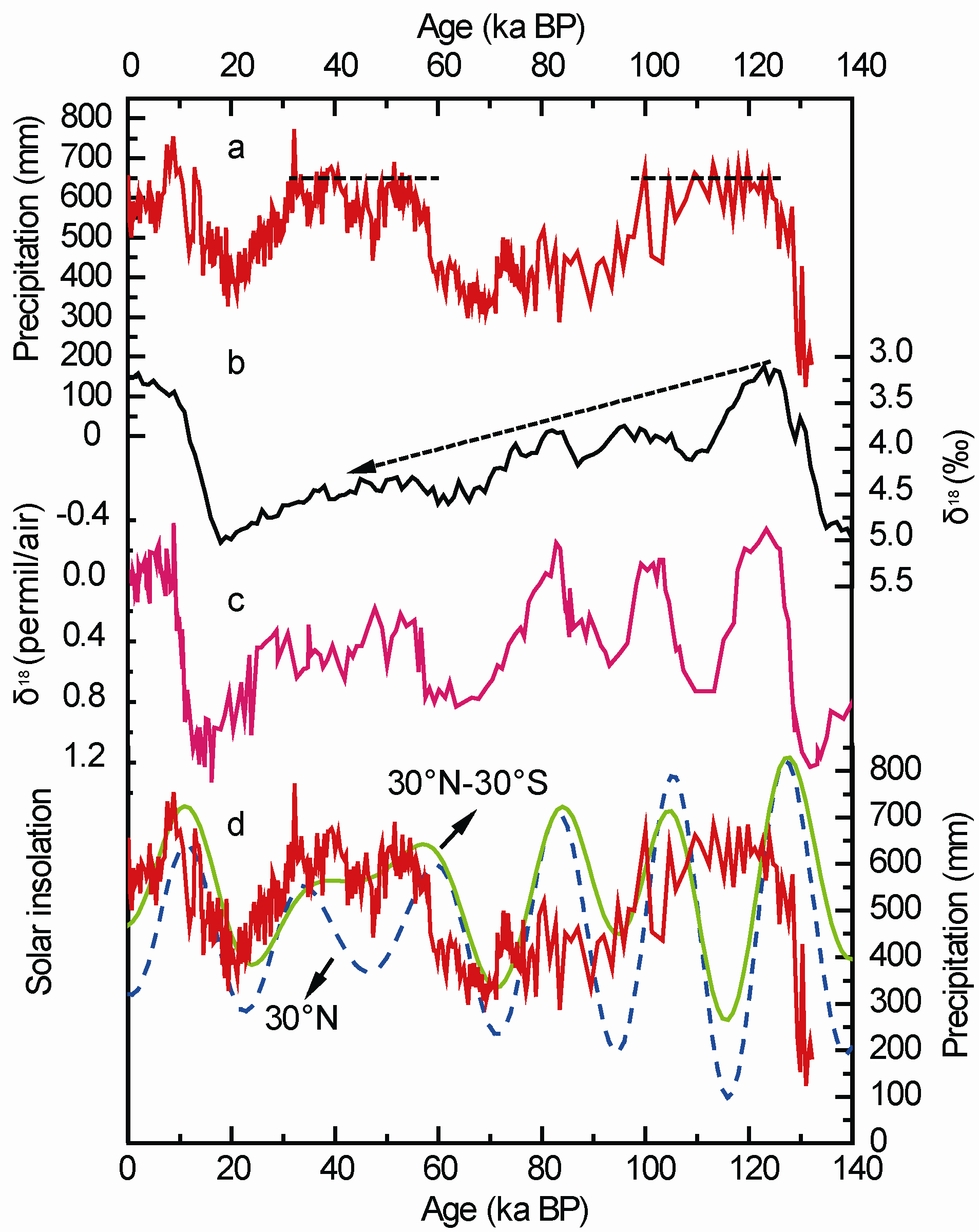Cosmogenic 10Be is a promising precipitation index, because its fallout flux in sediments is mainly controlled by wet precipitation after its production in the atmosphere.
Based on the high precision measurement of 10Be and the study of various climate proxies, the last 130 ka paleoprecipitation from Chinese loess 10Be was reconstructed. The general variation of the new 10Be precipitation record compares well with δ18O records from Hulu-Sanbao caves, which is widely regarded as a reliable record of Asian Monsoon intensity. Like speleothem δ18O, the 10Be precipitation record from loess during MIS 5 clearly reveals sub-cycles (MIS 5a-MIS 5e) of precipitation changes. The variation trend of our 10Be-derived precipitation record is broadly consistent with summer (June, July, and August, (JJA)) solar insolation changes in the Northern Hemisphere, except during MIS 3, supporting the idea that paleo-Asian Monsoon intensity varies directly with changes in Northern Hemisphere summer insolation on orbital timescales.The precipitation record more strongly resembles the insolation differential between 30°N and 30°S during MIS 3, suggesting that the paleoprecipitation increase during MIS 3 in China appears to be controlled by interhemispheric insolation forcing, in response to the interaction between the Northern and Southern Hemispheres.
Zhou, W., F. Xian, Y. Du, X. Kong, and Z.Wu (2014), The last 130 ka precipitation reconstruction from Chinese loess 10Be, J. Geophys. Res. Solid Earth, 119, doi:10.1002/2013JB010296

 © 2015 Institute of Earth Environment,CAS
© 2015 Institute of Earth Environment,CAS Address:No. 97 Yanxiang Road, Xi'an 710061, Shaanxi, China

 Location :
Location :